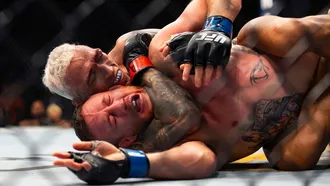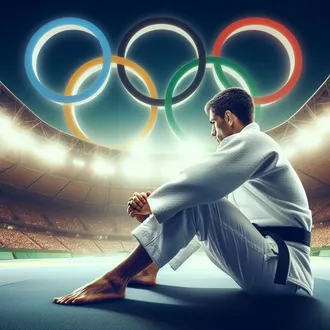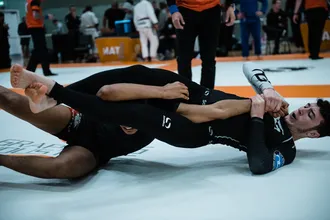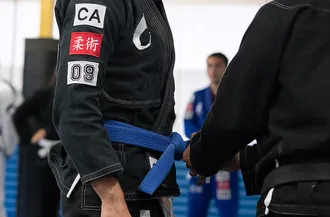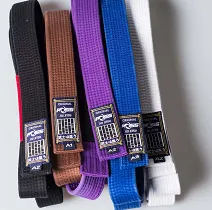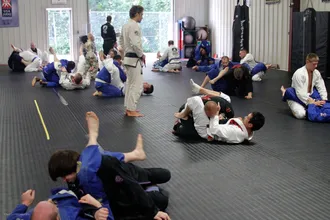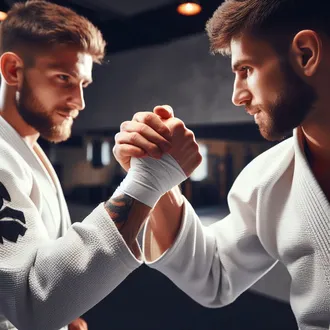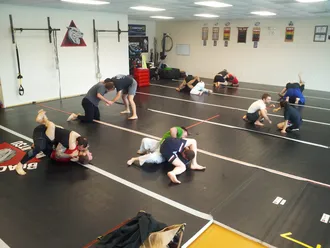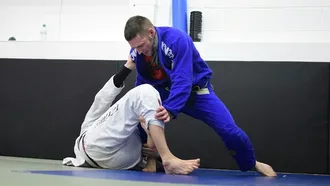
Jiu Jitsu is probably the number one activity that I could recommend to someone to improve their lives overall.
Brazilian Jiu-Jitsu (BJJ) is more than just a martial art—it's a powerful system of self-defense, strategy, and skill that has transformed lives worldwide. Built on the principles of technique over strength, BJJ empowers practitioners to overcome larger, stronger opponents using leverage, positioning, and submissions.
Whether you're looking to develop real-world self-defense skills, get in shape, or compete in MMA, BJJ offers something for everyone. Let's explore what makes Brazilian Jiu-Jitsu so unique and why stepping onto the mat might be one of the best decisions you'll ever make.
The Fascinating History of Brazilian Jiu Jitsu
From Japan to Brazil: The Origins of BJJ
Brazilian Jiu-Jitsu traces its roots to Japanese Jujutsu and Judo, both of which were designed for self-defense and battlefield combat. One of Judo’s top experts, Mitsuyo Maeda, a 7th-degree black belt, traveled the world demonstrating these techniques before settling in Brazil in the early 20th century.
It was in Brazil that Maeda introduced these grappling-based fighting principles to the Gracie family, who would later refine and evolve them into what we now recognize as Brazilian Jiu-Jitsu.
Who Created Brazilian Jiu-Jitsu & How It Evolved
Helio Gracie, one of Maeda’s most dedicated students, transformed traditional Judo techniques into a system that prioritized leverage, timing, and technique over brute strength. Unlike Judo, which emphasizes powerful throws, Gracie Jiu-Jitsu shifted the focus to ground control and submissions, allowing smaller fighters to defeat larger opponents.
This adaptation laid the foundation for modern Brazilian Jiu-Jitsu, making it one of the most effective grappling arts in the world.
BJJ and the Ultimate Fighting Championship (UFC)
The explosion of BJJ’s global popularity is largely credited to the rise of Mixed Martial Arts (MMA) and the formation of the Ultimate Fighting Championship (UFC) in the early 1990s.
In the early UFC tournaments, fighters from different martial arts competed to determine the most effective fighting style. Royce Gracie, representing Brazilian Jiu-Jitsu, shocked the world by defeating much larger opponents with technique and submissions, winning three of the first four UFC events.
Unlike most competitors, who relied on striking, Gracie focused on grappling, positional control, and submissions, proving that superior technique could overcome size and strength. His victories cemented BJJ as a fundamental skill for modern MMA and self-defense.
Brazilian Jiu-Jitsu Techniques: How to Improve Your Skills
Brazilian Jiu-Jitsu is a dynamic martial art centered on positional control, leverage, and submissions. Unlike striking-based disciplines, BJJ emphasizes grappling, transitions, and strategic positioning to neutralize an opponent.
While BJJ includes takedowns and standing techniques, its true strength lies in ground fighting. Mastering ground control is what sets BJJ apart, allowing practitioners to control, defend, and submit opponents with precision.
The Art of Ground Fighting
Unlike martial arts that focus on striking, BJJ is designed to dominate opponents on the ground. The goal? Establish control, advance position, and secure a submission. Through proper technique, even a smaller fighter can outmaneuver and overcome a stronger opponent.
Some core techniques include:
- ⚔️ Guards: Defensive positions that allow you to attack while on your back.
- 🔄 Sweeps: Techniques used to reverse an opponent’s position, moving from bottom to top.
- 🛡️ Mount & Side Control: Dominant pin positions that limit your opponent’s movement.
- 💪 Submissions: Chokes, joint locks, and other techniques to force an opponent to tap out.
These techniques make BJJ an incredibly strategic martial art, where a smaller fighter can outthink and outmaneuver a stronger opponent.
The Journey Through the Belt System
Progress in BJJ is marked by the belt system, beginning with white and advancing through blue, purple, brown, and finally, black.
Each belt is a milestone representing the practitioner's skill level, experience, and dedication to the art.
Brazilian Jiu-Jitsu Benefits: Why You Should Train
A Full-Body Workout Like No Other
BJJ isn’t just about learning techniques—it’s a total-body workout that enhances strength, endurance, and flexibility. Unlike traditional gym routines, BJJ training involves constant movement, resistance, and adaptability, making it one of the most dynamic ways to stay in shape.
Some key physical benefits include:
- 🔥 Cardiovascular endurance: Rolling (live sparring) significantly improves stamina and conditioning.
- 💪 Functional strength: Grappling movements develop core, grip, and stabilizer muscles.
- 🧘 Flexibility & mobility: Techniques encourage better range of motion and body control.
- ⚡ Weight loss & calorie burning: A single BJJ session can burn between 500-1,000 calories, making it an excellent workout for fat loss.
Mental & Emotional Growth
Beyond the physical aspect, BJJ is a powerful tool for mental resilience. The problem-solving nature of the art challenges your mind, helping you stay calm under pressure and develop strategic thinking.
Other mental benefits include:
- 🛠️ Problem-solving skills: Every roll is like a chess match, requiring quick decision-making.
- 🧘 Stress relief: The physical exertion and mental focus of BJJ help reduce stress and improve overall well-being.
- 🤝 Community & camaraderie: The BJJ community is welcoming, creating a strong sense of belonging.
Embarking on Your BJJ Journey
Is BJJ Right for You?
BJJ isn’t just about fighting—it’s about personal development. Whether you're looking to improve self-defense, fitness, or compete, BJJ offers something for everyone.
Still unsure? Ask yourself:
- ✔️ Do you want to learn a practical self-defense system that works against larger opponents?
- ✔️ Are you looking for a full-body workout that keeps you engaged and motivated?
- ✔️ Do you enjoy learning and improving through technical skill rather than brute strength?
If you answered yes to any of these, BJJ might be the perfect fit for you!
Taking the First Step
Curious about what a BJJ class is like? Many gyms offer free trial classes where beginners can experience their first roll in a friendly, structured environment.
Try finding a reputable BJJ school and take that first step onto the mat.
No matter your age or fitness level, BJJ is for everyone. You don’t need to be strong or athletic—just willing to learn.
Frequently Asked Questions About Brazilian Jiu-Jitsu (BJJ)
What is Brazilian Jiu-Jitsu (BJJ)?
Brazilian Jiu-Jitsu (BJJ) is a martial art that focuses on ground fighting, submissions, and controlling an opponent using leverage and technique rather than brute strength. It is widely practiced for self-defense, fitness, and competition.
When was Brazilian Jiu-Jitsu invented?
BJJ was developed in the early 20th century. It evolved from traditional Japanese Jujutsu and Judo, introduced to Brazil by Mitsuyo Maeda in the 1910s.
Who invented Brazilian Jiu-Jitsu?
The Gracie family, particularly Helio Gracie, is credited with refining and developing Brazilian Jiu-Jitsu into what it is today. They adapted techniques from Judo and Japanese Jujutsu to focus more on ground-based fighting and submissions.
Why train in Brazilian Jiu-Jitsu?
People train in BJJ for various reasons, including self-defense, fitness, competition, mental resilience, and personal growth. It is an excellent way to build confidence, problem-solving skills, and physical endurance.
Is BJJ good for self-defense?
Yes! BJJ is one of the most effective self-defense martial arts because it teaches techniques that allow smaller individuals to control or submit larger opponents. It is particularly useful for real-world situations where fights often go to the ground.
Why is Brazilian Jiu-Jitsu so effective?
BJJ is effective because it focuses on leverage, positional control, and submissions rather than brute force. It allows practitioners to neutralize stronger opponents by using strategy, positioning, and technique.
Does BJJ have striking?
Traditional Brazilian Jiu-Jitsu does not include striking, as it focuses on grappling and submissions. However, "Combat Jiu-Jitsu" and some self-defense-based BJJ programs incorporate striking techniques.
Is Brazilian Jiu-Jitsu hard to learn?
BJJ has a learning curve, especially for beginners, as it requires both technical knowledge and physical adaptation. However, consistent training makes it easier, and beginners can start learning fundamental techniques right away.
How long does it take to learn Brazilian Jiu-Jitsu?
The time required to learn BJJ varies based on training frequency and goals. Many practitioners become proficient within 2-3 years, while achieving a black belt typically takes 8-12 years.
Is BJJ a good workout?
Yes! BJJ provides a full-body workout that improves cardiovascular health, strength, endurance, and flexibility. It also burns calories effectively and enhances coordination.
Does BJJ build muscle?
While BJJ is not a traditional weightlifting workout, it does build functional muscle, especially in the core, grip, and upper body. Regular training strengthens the body through dynamic resistance and isometric movements.
Conclusion: Join the BJJ Community
BJJ is a martial art that pushes you to your limits—physically, mentally, and beyond. It's a journey filled with continuous learning, self-discovery, and the joy of being part of a welcoming community.
If you're looking for a meaningful way to enhance your life, consider giving BJJ a try. Who knows where this journey might take you?
Embark on your BJJ journey today and discover the transformative power of Brazilian Jiu Jitsu. Whether you're aiming to compete, defend yourself, or simply get in shape, BJJ offers a rewarding path for everyone.
See you on the mats!
